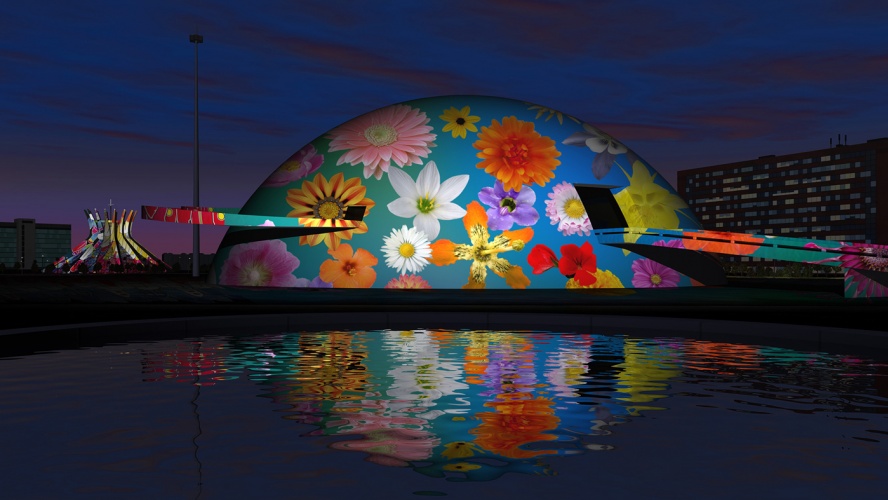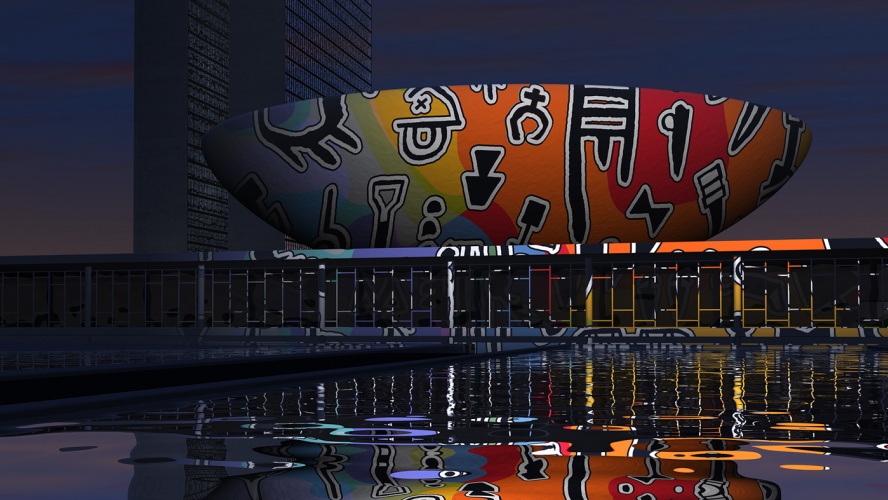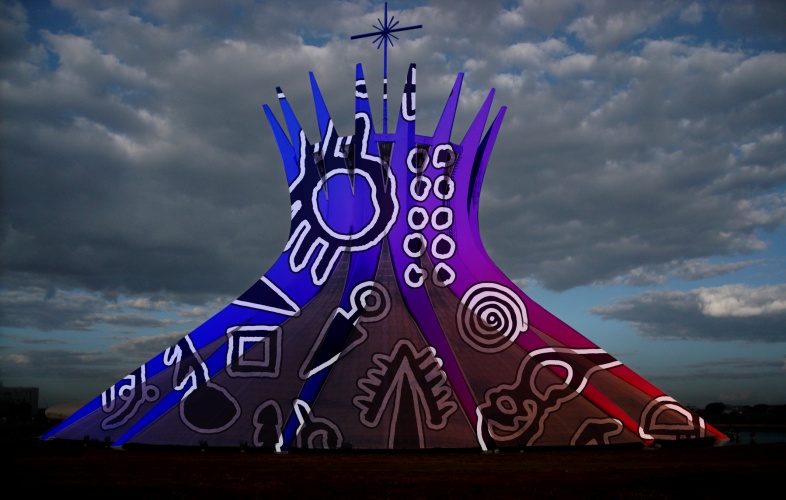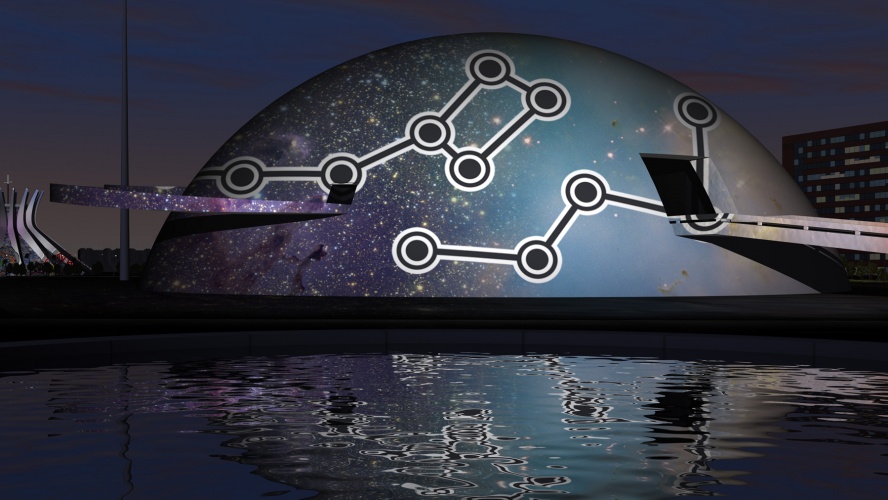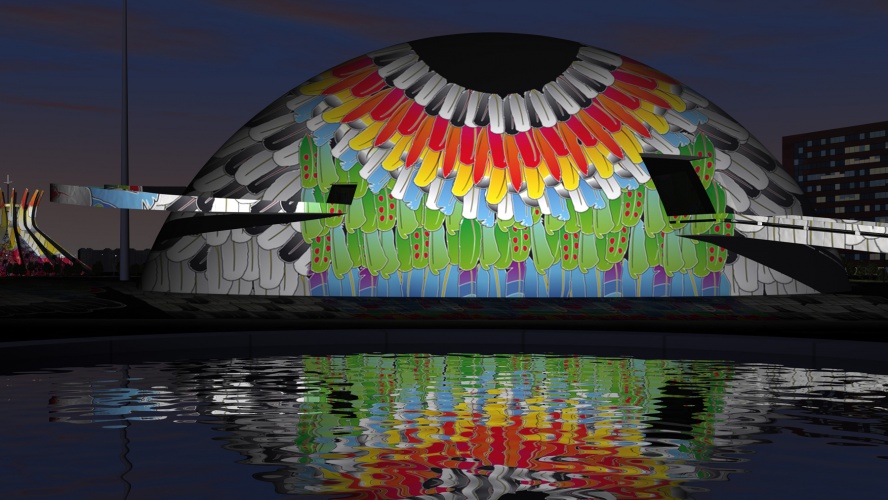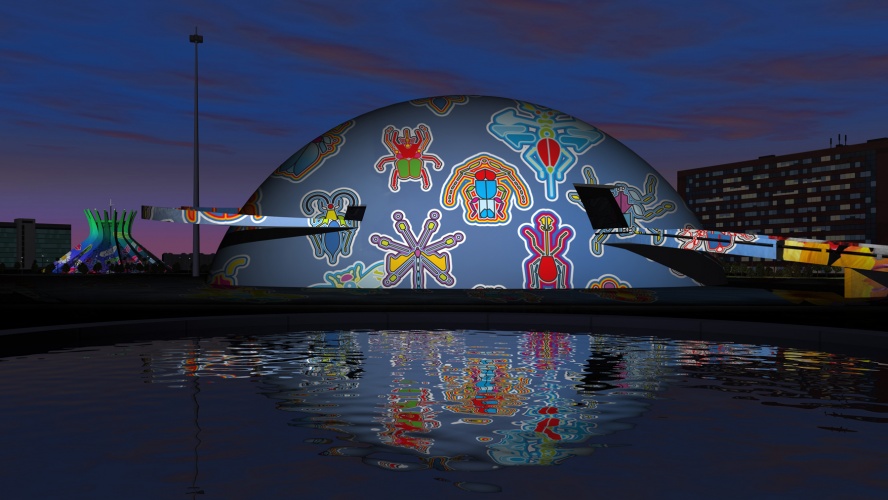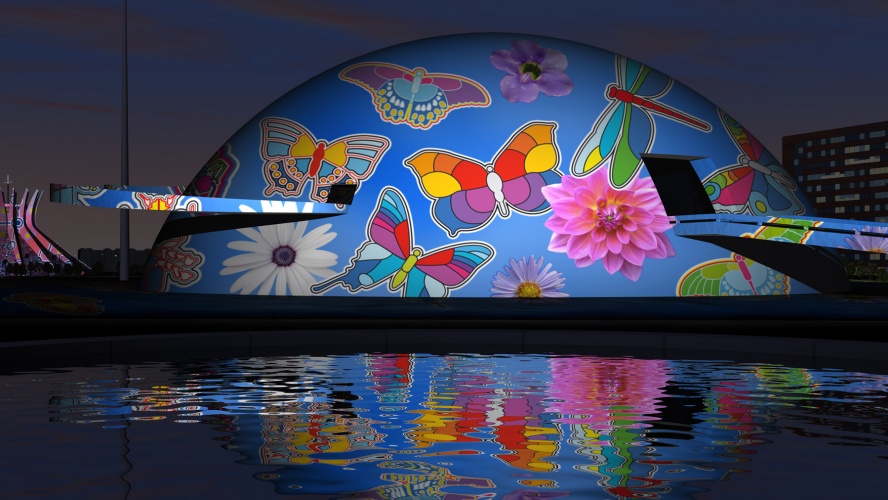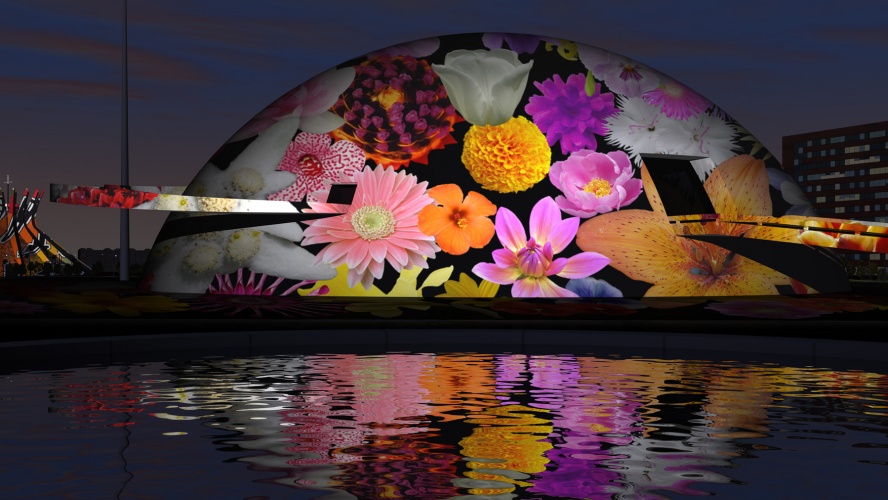Brasilia em Luz
Date:
2009
Ref:
0022
Matériaux:
Proposal for light based work on three Oscar Niemeyer buildings in the city of Brasilia (museum parliament and cathedral) to celebrate the Year of France in Brazil
Catalogued:
Lucy + Jorge Orta. Light Works, Black Dog Publishing, 2010, ISBN 978-1-907317-04-0
Courtesy:
Year of France in Brazil
The city of Brasilia was created in a sparsely populated region of the neo-tropical savannah Amazon, once rich in biodiversity. The three iconic architectures designed by Oscar Niemeyer stand out in contrast to this biome, now one of the most threatened in South America. To celebrate the National Day of Brasilia and the Year of France in Brazil, the National Museum of Brasilia, the Brazilian parliament and the Cathedral of Brazil form the backdrop for three dramatic Light Works, Brasilia em Luz.
Orta's visual language depicts elements from the natural world and reflects on man's impact on the equilibrium of the ecosystem. The point of departure for their powerful iconography is the legend of Manto de Tupinambá, a ceremonial mantel or cape created entirely from feathers. After meeting Oscar Niemeyer, the artists imagined the National Museum of Brasilia’s iconic ‘breast-womb’ clothed in successive layers of texture, rich with symbols referencing the fragility of our natural environment.
The domed architecture of the museum was ceremoniously dressed and undressed with ephemeral light patterns composed of abstract signs, ideograms, silhouettes, beetles, butterflies and flowers. Constellations and insects evoke the different scales and diversity of our global ecosphere: the minute entomologic world invisible to eyes that are not accustomed to looking versus the immensity of the millions of stars and galaxies - species and stars disappear everyday, whilst millions more are still to be discovered; mesh and connective symbols represent our networked world, metaphors for the social ties that bind us together; abstract hearts symbolise the act of giving in recognition of the other; and pictograms are the artists’ universal alphabet forming a common, imaginary dialogue between peoples.
